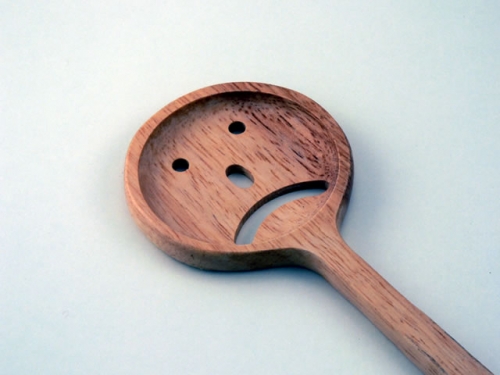Last week, we took some friends to a new restaurant, ââ¬ËAntonioââ¬â¢s Place,ââ¬â¢ and noticed that the waiter who took our order carried a spoon in his shirt pocket.
It seemed a little strange. When the busboy brought our water and utensils, I observed that he also had a spoon in his shirt pocket.
Then I looked around and saw that all the staff had spoons in their pockets. When the waiter came back to serve our soup I inquired, ââ¬ËWhy the spoon?ââ¬â¢
ââ¬ËWell, ââ¬Ëhe explained, ââ¬Ëthe restaurantââ¬â¢s owner hired Andersen Consulting to revamp all of our processes. After several months of analysis, they concluded that the spoon was the most frequently dropped utensil. It represents a drop frequency of approximately 3 spoons per table per hour.
If our personnel are better prepared, we can reduce the number of trips back to the kitchen and save 15 man-hours per shift.ââ¬â¢
As luck would have it, I dropped my spoon and he replaced it with his spare. ââ¬ËIââ¬â¢ll get another spoon next time I go to the kitchen instead of making an extra trip to get it right nowââ¬Â¦Ã¢â¬â¢ I was impressed.
I also noticed that there was a string hanging out of the waiterââ¬â¢s fly.
Looking around, I saw that all of the waiters had the same string hanging from their flies. So, before he walked off, I asked the waiter, ââ¬ËExcuse me, but can you tell me why you have that string right there?ââ¬â¢
ââ¬ËOh, certainly!ââ¬â¢ Then he lowered his voice. ââ¬ËNot everyone is so observant. That consulting firm I mentioned also learned that we can save time in the restroom.
By tying this string to the tip of our you-know-what, we can pull it out without touching it and eliminate the need to wash our hands, shortening the time spent in the restroom by 76.39%.ââ¬â¢
I asked quietly, ââ¬ËAfter you get it out, how do you put it back?ââ¬â¢
ââ¬ËWell,ââ¬â¢ he whispered, ââ¬ËI donââ¬â¢t know about the others, but I use the spoon.ââ¬â¢




It seemed a little strange. When the busboy brought our water and utensils, I observed that he also had a spoon in his shirt pocket.
Then I looked around and saw that all the staff had spoons in their pockets. When the waiter came back to serve our soup I inquired, ââ¬ËWhy the spoon?ââ¬â¢
ââ¬ËWell, ââ¬Ëhe explained, ââ¬Ëthe restaurantââ¬â¢s owner hired Andersen Consulting to revamp all of our processes. After several months of analysis, they concluded that the spoon was the most frequently dropped utensil. It represents a drop frequency of approximately 3 spoons per table per hour.
If our personnel are better prepared, we can reduce the number of trips back to the kitchen and save 15 man-hours per shift.ââ¬â¢
As luck would have it, I dropped my spoon and he replaced it with his spare. ââ¬ËIââ¬â¢ll get another spoon next time I go to the kitchen instead of making an extra trip to get it right nowââ¬Â¦Ã¢â¬â¢ I was impressed.
I also noticed that there was a string hanging out of the waiterââ¬â¢s fly.
Looking around, I saw that all of the waiters had the same string hanging from their flies. So, before he walked off, I asked the waiter, ââ¬ËExcuse me, but can you tell me why you have that string right there?ââ¬â¢
ââ¬ËOh, certainly!ââ¬â¢ Then he lowered his voice. ââ¬ËNot everyone is so observant. That consulting firm I mentioned also learned that we can save time in the restroom.
By tying this string to the tip of our you-know-what, we can pull it out without touching it and eliminate the need to wash our hands, shortening the time spent in the restroom by 76.39%.ââ¬â¢
I asked quietly, ââ¬ËAfter you get it out, how do you put it back?ââ¬â¢
ââ¬ËWell,ââ¬â¢ he whispered, ââ¬ËI donââ¬â¢t know about the others, but I use the spoon.ââ¬â¢





